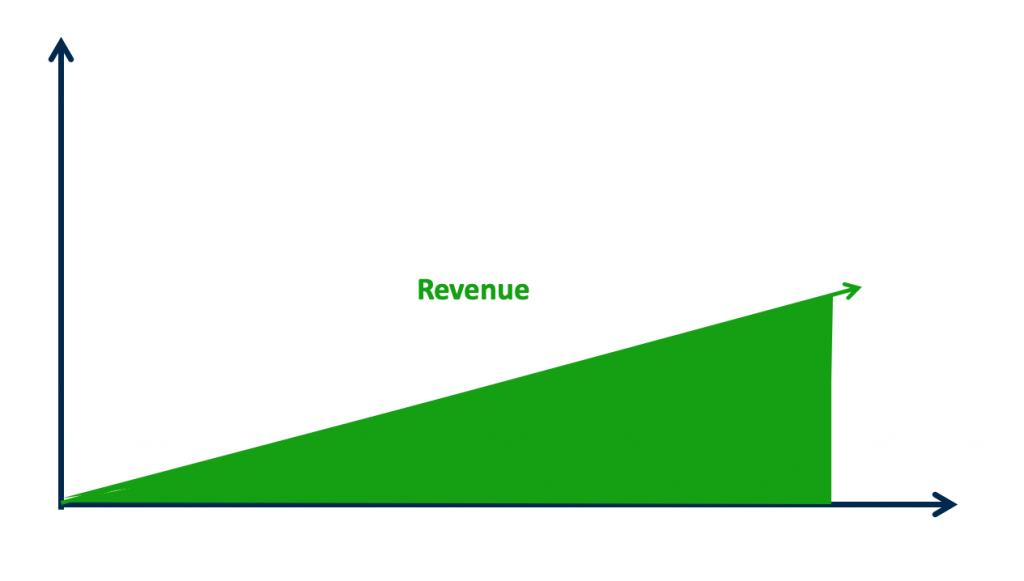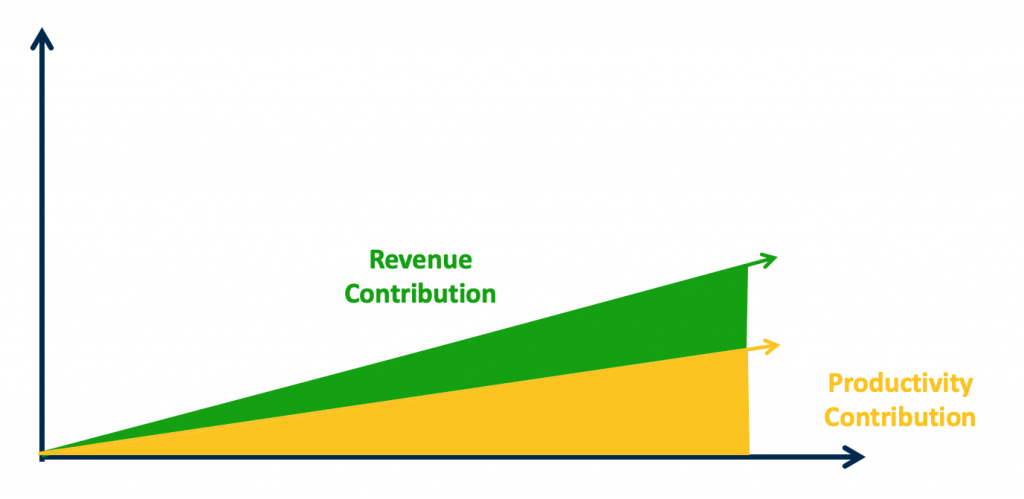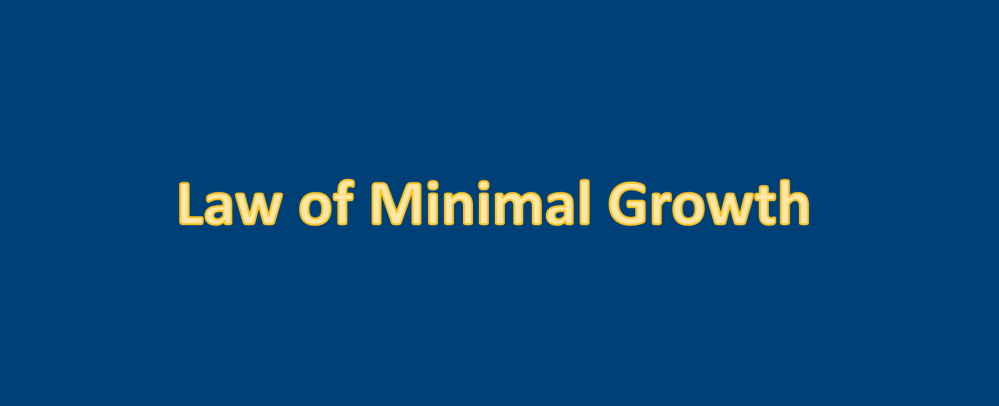The Law of Minimal Growth is my wording of a concept that I first observed when reading Ideas and Transformations and Harmony by Arno Penzias. A famous physicist who was involved in the Big Bang Theory and Nobel Laureate, Penzias was a manager at Bell Labs and wanted to apply his conceptual ideas to understanding current technology and the future evolution of technology. I found that he had many great ideas and really enjoyed his writing. It was fascinating to see a physicist write about leadership, management, and technology planning.
One concept he talked about seemed like one of Newton’s laws of motion, only for microeconomics. He stated that a healthy organization must grow 7-10% per year. That number varies based on inherent interest rates, the gross domestic product (GDP) growth rate, and the consumer price index (CPI), and so forth. I find a good rule of thumb in the U.S. economy is to plan on 7-10% growth each year.
Penzias argues that if companies aren’t growing, then they are stagnating, dying, and failing. He posited that companies need a certain amount of additional revenue for employee raises, which is going to be at least the cost of living. And, they need to fund some of their staff’s new ideas and increases in productivity. If organizations don’t have a basic level of growth, then it isn’t sustaining itself.
Revenue has to grow 7-10% per year. Part of that is for pursuing additional ideas. If a business isn’t spending on new opportunities or investing in S curves, then they are probably going to be left behind and defeated in the marketplace.
Every Organization at Each Level
By the way, the Law of Minimal Growth applies to every organization:
- For-profit,
- Non-profit,
- Governments, and
- Universities.
I have friends who work at a museum, which has staff, resources, and employees who want raises. If the museum doesn’t generate more revenue, then they have to make cuts. But you cannot continue cutting forever.
I live in a city in Arizona with fixed land, which means that not much open area exists. Taxes fund the city government, but if they want to pursue new initiatives, then they have to grow the tax dollars greater than the rate of inflation. Unfortunately, taxes are set up to grow with the inflation rate. The city cannot add new people or projects with this flat growth rate. All they can do is maintain what they already have going. It’s a regular occurrence and a constant challenge of how to raise more funds.
All organizations must increase their resources. Otherwise, they are doing the opposite, slowly dying.Steve Sliwa
One can also apply this at the micro levels of organizations – business units, departments, and even for individuals. If a person isn’t compensated enough to meet the essential cost of living and does not secure additional funds, then they are going to fall behind. Every level must experience growth.
Increasing Growth
One approach for organizational growth can simply be to add more revenue. If one increases that 7-10%, then the organization is on track.

Another strategy is to see if the business can find productivity contributions so that it frees up funds to keep the organization alive.
Unfortunately, most of the time, productivity contributions come from people reduction, and obviously, businesses can’t keep cutting people. The goal is to achieve more with fewer people.
Combining some revenue growth and getting by without adding people because of increased productivity could provide the gains to fuel the minimal need for the organization.

Conclusion
This observation shaped my thinking as I observed the world in terms of powering organizations. It may seem like a straight-forward and obvious concept, but too many organizations fail to ensure that this happens.
Share this Post

